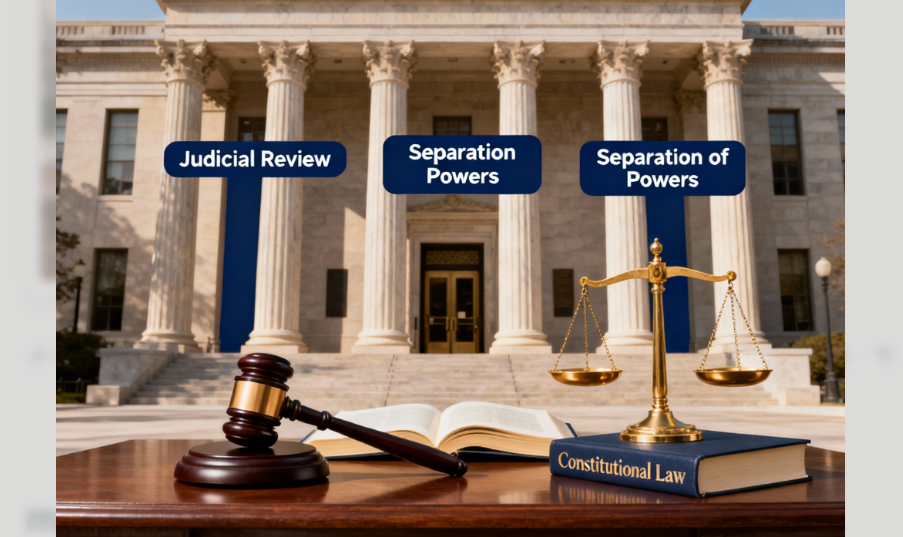Published On: 14th October, 2023
Authored By: Arpan Manna
Army Institute of Law, Mohali
DEMONSTRATION:
Both natural and man-made disasters can cause widespread destruction, loss of life, and economic disruption. To mitigate the impact of these disasters and facilitate effective response and recovery, countries around the world have established a legal framework for disaster management. This framework includes a wide range of laws, regulations, and policies designed to prevent, prepare for, respond to, and recover from disasters. This article provides an overview of the key components of a comprehensive legal framework for disaster management.
COMPONENTS OF THE LEGAL FRAMEWORK:
Disaster Risk Reduction (DRR):
- Risk assessment:
A key element of disaster management is risk assessment. Laws and regulations require the identification and assessment of various threats, vulnerabilities, and exposures within a jurisdiction. This process helps determine the level of risk and informs further planning and mitigation measures.
- Land planning:
Legal frameworks often include land use rules that limit or guide construction in high-risk areas, such as floodplains or earthquake-prone areas. These rules help reduce exposure to hazards.
- Building regulations and standards:
Regulations and standards establish construction requirements to ensure disaster resistance of buildings and infrastructure. Compliance with these regulations is important to minimize damage caused by disasters.
Readiness and Response:
- Emergency response agencies:
Laws usually establish emergency management agencies responsible for coordinating preparedness, response, and recovery. These agencies play a key role in disaster management.
- Disaster plans:
The legal framework requires the development and regular updating of disaster plans at various levels of government, from local to national. These plans outline response strategies, resource allocation, and coordination mechanisms.
- Early warning systems:
Legal regulations often require early warning systems to alert communities to impending disasters such as hurricanes, tsunamis, or wildfires. These systems save lives by providing timely information.
- Agreements on mutual assistance:
Cooperation between jurisdictions is very important during major disasters. Laws may allow for mutual aid agreements to allow regions to share resources and personnel as needed.
- Evacuation and protection:
The legal framework concerns evacuation procedures, including the designation of evacuation routes and emergency shelters. The laws also define the rights and obligations of evacuees.
Response and Return:
- Declaration of a state of emergency:
Laws provide mechanisms to declare a state of emergency, which gives authorities additional powers to respond quickly to disasters. This statement could trigger the mobilization of federal aid and resources.
- Allocation of resources:
Legal regulations determine how resources are distributed during and after a disaster. This includes funding for emergency relief, humanitarian aid, and long-term recovery efforts.
- Insurance and compensation:
Disaster management legislation may require insurance for certain hazards or establish mechanisms to compensate disaster victims. These measures will help individuals and businesses recover financially.
- Environmental protection:
Disaster management frameworks include provisions for environmental protection during response and recovery. The purpose of these laws is to minimize further environmental damage.
International cooperation:
- International Agreements:
Countries often sign international agreements related to disaster management, such as the Sendai Framework for Disaster Risk Reduction. These agreements promote cooperation and information exchange.
- Humanitarian Aid:
The legal framework can cover the delivery of humanitarian aid during international disasters and define the roles and responsibilities of governments and humanitarian organizations.
IMPLEMENTATION OF THE LEGAL FRAMEWORK:
Institutional Framework:
- National disaster management agencies:
Most countries establish national disaster management agencies that are responsible for overall coordination, policy development, and resource allocation.
- Local and regional governments:
Regional units often have their disaster agencies, adapted to the national framework but adapted to local needs.
- Coordination mechanisms:
The legal framework creates coordination mechanisms between various levels of government and with non-governmental organizations and private sector actors.
Funding and allocation of funds:
- Budget rules:
Laws determine funding sources and budget allocations for disaster management activities. Adequate funding is critical to effective disaster preparedness and response.
- Mobilization of resources:
Legal mechanisms are often provided to mobilize resources such as emergency funds or grants to ensure a rapid response to disasters.
Public awareness and education:
- Training programs:
Disaster management legislation may require training programs to increase public awareness of disaster risk, preparedness, and response.
- Community involvement:
The legal framework may require community participation in disaster planning, emphasizing the importance of local knowledge and commitment.
Monitoring and Evaluation:
- Reporting requirements:
The law often mandates reporting and monitoring to assess the effectiveness of disaster response measures.
- Response measures:
Legal frameworks can include mechanisms to hold government agencies and officials accountable for their disaster management responsibilities.
CHALLENGES AND FUTURE DIRECTIONS:
Adaptation to climate change:
- Climate resistance:
As climate change exacerbates the frequency and intensity of natural disasters, the legal framework must be adapted to prioritize climate change resilience and mitigation strategies.
- Transboundary disasters:
International cooperation and legal mechanisms for transboundary disaster management become increasingly important when disasters do not consider geopolitical boundaries.
Technological Advances:
- Big data and artificial intelligence:
New technologies can improve disaster forecasting, early warning systems, and response coordination. Laws may require data protection and cyber security.
- Remote monitoring:
The legal framework should consider the use of remote sensing techniques for real-time disaster monitoring and assessment.
Inclusion and Vulnerable populations:
- Vulnerable groups:
Legislative provisions should address the unique needs of vulnerable populations, including the elderly, disabled, and marginalized communities.
- Gender sensitivity:
Disaster management laws can incorporate gender-sensitive approaches to ensure equal protection and opportunities for all.
ORGANIZATIONS THAT MANAGE DISASTERS THE NATIONAL DISASTER MANAGEMENT AUTHORITY (NDMA): PUBLIC CATASTROPHE
The overseeing authority, or NDMA, is the summit group of calamity executives, headed by the State leader of India. He is in charge of managing, supervising, and keeping an eye on the National Disaster Response Force (NDRF). The NEC, or National Executive Committee, The Union Home Minister serves as Chairman of the NEC, which is made up of Ministerial Members of the Government of India and Secretaries to the Government of India, namely
Ministries/Agriculture, Atomic Energy, Defence, Drinking Water Supply, Environment and Forestry, and other related areas By the National Disaster Management Policy, the NEC is developing a national disaster management plan. Authority for State Disaster Management (SDMA): – The SDMA is headed by the chief minister of the unit in question. The State Government has a State Chief Panel (SEC) which helps the State Debacle the Executives Authority (SDMA) during calamities.
Administration: The District Disaster Management Authority (DDMA) is led by the district collector, deputy commissioner, or district magistrate, depending on the situation. These individuals are co-presidents chosen by the municipality. Local governments would include Panchayati Raj Institutions (PRIs), Municipalities, districts, and cantons 11 Institutional and legal organizations Governments, and urban planning agencies that oversee and manage civic services. DDMA ensures that all guidelines set by NDMA and SDMA are followed by state government agencies at the district level and local government circuits.
CONCLUSION:
A comprehensive legal framework for disaster management is essential to reduce risk, improve preparedness, and facilitate effective response and recovery. These frameworks include risk assessment, preparedness planning, response coordination, and international cooperation. However, to ensure resilience, adaptation to changing challenges such as climate change and technological development is crucial.




